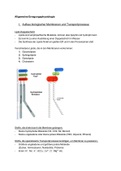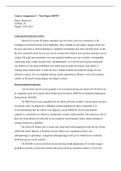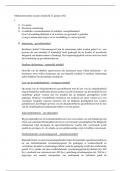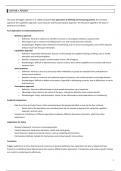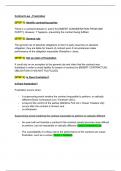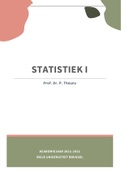OCEANOGRAPHY, GEOLOGY, HISTORY, AND TECHNOLOGY
MARINE RESEARCH
• Marine biology = biological oceanography
→ = scientific study of organisms that live in the sea
Marine biology: organisms close to shore or perspective of the organisms
Biological oceanography: organisms of the open ocean or perspective of the ocean
• Oceanography (should be rather named Oceanology)
Biological oceanography (marine biology)
Geological oceanography
Physical oceanography
Chemical oceanography
• Marine research is interdisciplinary
• So, little difference between marine biology and oceanography
Oceanography is better: science of ocean, not just biology
THE WORLD OCEAN
• 4 major ocean basins + Southern or Antarctic Ocean
Indian Ocean
Pacific Ocean
Atlantic Ocean
Arctic Ocean
• Earth’s surface
Land: 29.2%
Ocean: 70.8%
• Relative ocean size
Pacific: 50.1%
Atlantic: 26.0%
Indian: 20.5%
Arctic: 3.4%
• Average Ocean depth: figure
Pacific: deepest
Arctic Ocean fluctuates the most
• Comparing Oceans to land
Mariana = deepest point of the ocean
Average: 3,729m
Average on land: 840m
• Major ocean basins are extensions of the interconnected world ocean
4 basins come together in Southern Ocean
So they are all connected
1
,MARINE RESEARCH: HISTORY
Phoenicians
• Lived in Syria, Libanon, Palestina…
• 2000 B.C.
But moved to Mediterranean Sea
Red Sea
Indian Ocean
British Isles
• Circumnavigation of Africa: 590 B.C.
Greeks
• Herodotus: made a map of the known world in 450 B.C.
• Aristotle (384-322 B.C.): 1st marine biologist: description of marine
life
“gills of fish are breathing appartatus”
• Pytheas (geographer): sailed to northern Atlantic around 325 B.C.
• Eratosthenes (276-192 B.C.) calculated the Earth’s
circumference: 40,000 km → close to real
A well in Aswan (Egypt) → light shines in well → 7.2° angel
measurement
Romans
• Claudius Ptolemy: map of the known world in 150 A.D.
Vikings
• First Europeans to reach N-America
• Viking colonies in Iceland and Greenland
Greenland: agriculture then still possible
Iceland: completely occupied so it became unattractive to other people to go there
European age of discoveries (1492-1522)
• Cabot: 1 ship and 20 men
• Columbus: 3 ships and 88 men
• Magellan: 5 ships and 280 men
Travelled around the world in 3y
Chinese voyages of the Ming Dynasty
• 7 voyages from 1405-1433 with up to 317 ships and 37,000 men
• So lot more then EU
• Did not colonize <-> Europeans
James Cook
• First scientific explorations
Cartography
Natural history
Measurements of water T, currents, wind, and depth
• 18th century
• Killed in 1779 in Hawaii
2
,Benjamin Franklin’s chart of the Gulf Stream (1769)
• From America
• First one to describe the Gulf Stream to explain the climate differences
between Europe and America
Went to England: fast
Went back to America: slower
So Gulf Stream towards England
HMS Challenger: first oceanographic expedition (1872-1872)
• 127,500 km voyage
• 492 deep-sea soundings: to have an idea how deep the sea is
• Deepest sounding: 8183 m
• 133 bottom dredges
• 151 open water trawls
• 263 water T measurements
• Water samples from 1830 m depth
• 4717 new species
Belgica: first scientific expedition to Antarctica (1897-1899)
• First overwintering in Antarctica (because they were stuck in ice)
• Ice-drift for 12 months from March 1898 to March 1899: 3,600km
• Adrien de Gerlache (Belgium)
• Roald Amundsen (Norway)
World War I
• German development of U-boat submarines in World War I
• Invention of echo sounder (sonar: sound navigation and ranging)
German wanted to detect the Allies
Sounds reflects on sea floor → calculate depth
Modern sonar: creating “images” of how sea floor looks
Meteor expedition (1925-1927)
• Multidisciplinary study on topography, currents, and chemistry of the South Atlantic
• 2 sonars for echo sounding
• 25 month voyage
• 310 sampling stations
The submersible Bathyspere
• Dive to 923 m off Bermuda in 1934
• First deep dive
Auguste Piccard (1884-1962)
• From Switzerland
• Professor for physics at ULB in 1922
• 1930’s: balloon-flights up to 23,000 m (atmosfphere) (world record)
• 1953: dive with submersible Trieste to 3,150 m (world record)
• His son Jaques Piccard & Don Walsh (US Navy): dive to 10,912 m in the Challenger Deep, Mariana Trench in 60’s
MARINE RESEARCH: MODERN TECHNOLOGY
• The Alvin (1964): 4,000 m deep
Discovery of black smokers: organisms feed by nutrient from earth crust
RMS Titanic
• SCUBA diving (Self Contained Underwater Breathing Apparatus)
• Van Veen grab
• Trawl net → trawl net catch: identification, sorting, and measurement (length and weight)
3
, • Beam trawl
• Bongo net: plankton (2 nets → 2 replicates)
Coastal Zone Colous Scanner (CZCS) on the Nimbus-7 satellite
• Phytoplankton pigment concentration (figure)
Global map
High productivity around coasts
Low productivity in open ocean desserts
Satellite: measuring the sea floor
• Submarine mountains
• Ocean surface is theoretically flat, but anomaly due to
mountains → figure
➔ Bathymetry
The study of beds or floors of water bodies
More detailed using satellite data than ship bathymetry
OCEANOGRAPHY: THE SEA FLOOR
Green = mid-ocean ridges
➔ Eg. in Iceland → hotspot of volcanic activity
CONTINENTAL DRIFT THEORY
• By Alfred Wegener (German geophysicist) in 1912
• All continents were joint to the supercontinent Pangea 180-200 mya
• One large Ocean called Panthalassa and smaller Tethys Sea
Geological evidence for continental drift
• Appalachian Mountains
• Caledonian Mountains
• Atlas
• Mesosaurus
THEORY OF PLATE TECTONICS → EVIDENCE FOR CONTINENTAL DRIFT
• Developed in the 1950s and 1960s
• Detailed bathymetry of the ocean floor → discovery of mid-ocean ridges → first hint that plate tectonics exist
4



